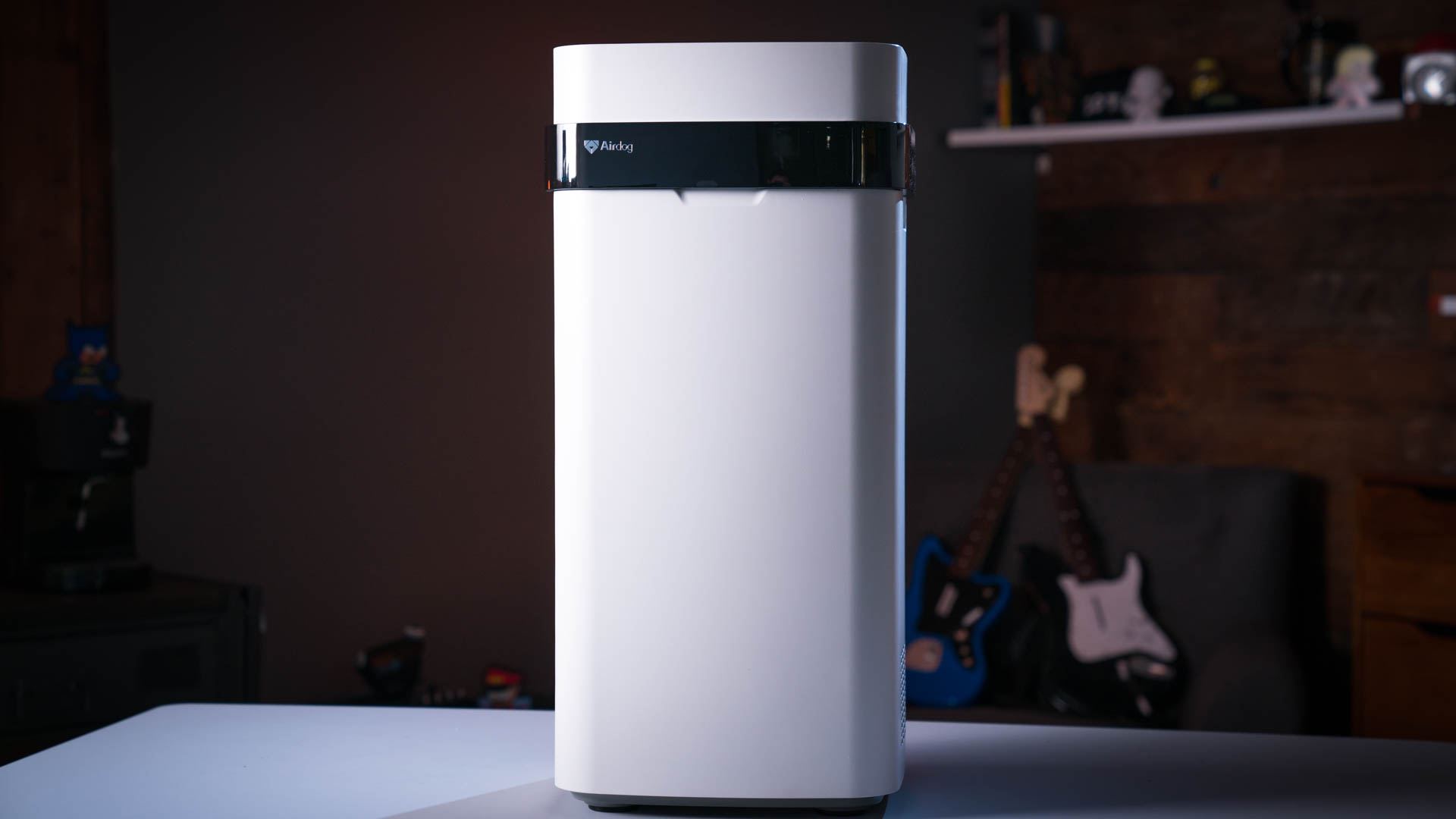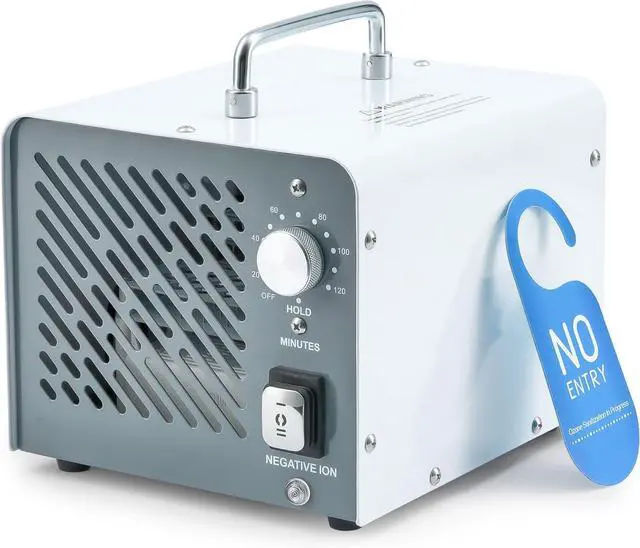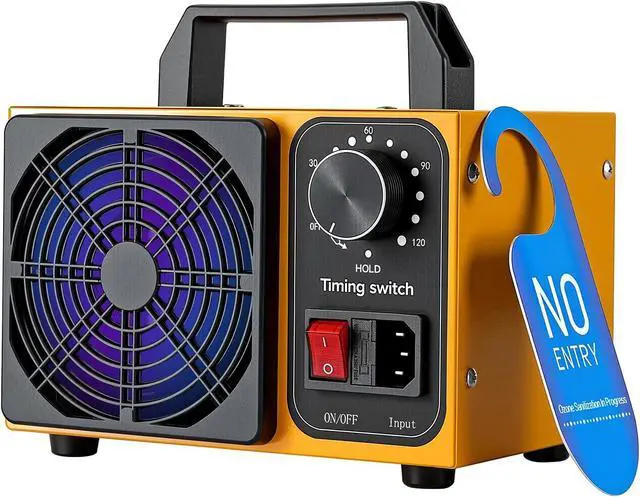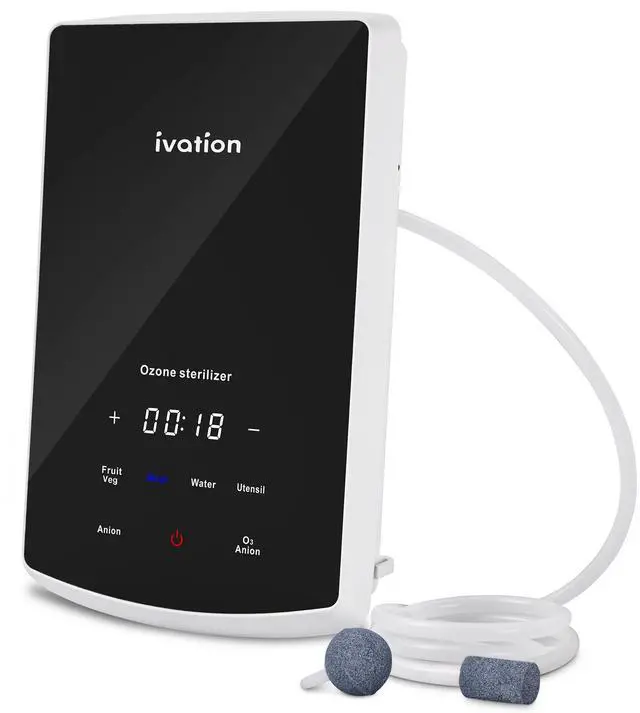
Springtime is nearly upon us, and while most people relish the return of the sunshine and flowers, anyone with allergies dreads the complications that come with the changing of seasons. Pollen, mold spores, pet dander, and other airborne irritants bombard the sinuses, making life miserable for millions of Americans. Air purifiers have grown in popularity over the years as options for those seeking to breathe cleaner air, and modern technology has pushed the threshold of high-quality air filtration.
Silicon Valley-based company Airdog thinks their X5 Wi-Fi air purifier pushes the standards for personal and home clean air higher than anyone else, by utilizing a hyper-efficient design with advanced filtration technology. After a successful campaign on crowdfunding platform Indiegogo their final design hit the market, but does their air purifier noticeably improve the air quality?
Why Would People Need Air Purifiers?
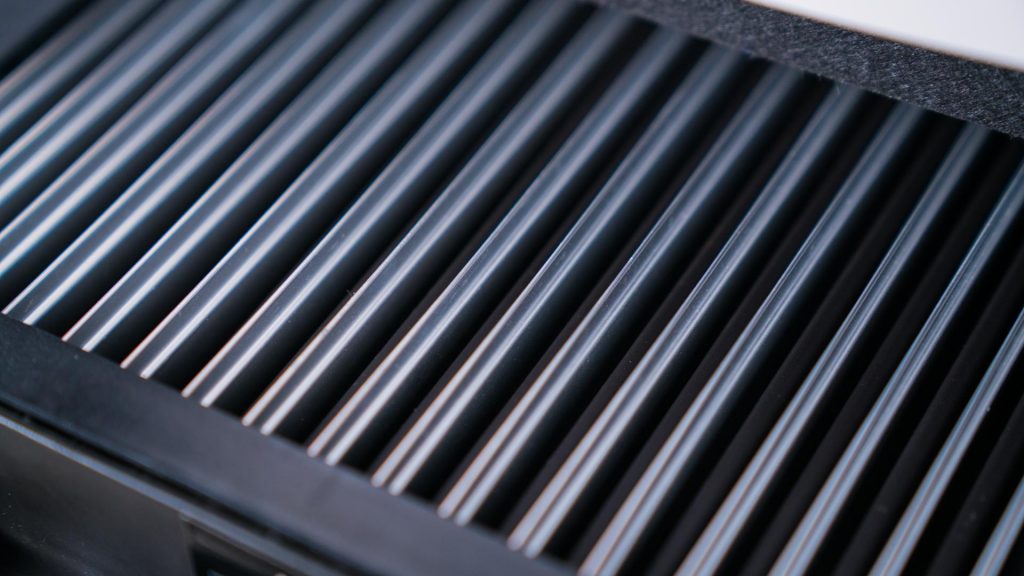
First off, while air purifiers are becoming more and more common for home and office use, they aren’t things the vast majority of the public are familiar with. Standalone air purifiers are not like traditional fans in that they don’t just push air around, they suck the air through a filter, removing a variety of particles, and circulate the clean air.
Air purifiers can remove dust, pet dander, pollen, odors, smoke, bacteria, and viruses depending on how fine the filtration system is, which can make a surprising impact on both comfort and actual respiratory health. Air purifiers also help to resolve the general staleness of air that happens in houses quite often, sometimes without even becoming noticeable. Think of it this way, without opening windows or running forced air into the home, the lion’s share of the air is the same, day-in, day-out.
If pets or carpet are introduced to the mix, additional dust and dander are constantly trapped in the home and circulating the air everyone breathes, making it feel heavier and less fresh. Also, most asthma cases are a result of airborne allergens, so for those that suffer from attacks or those prone to developing asthma (like young children), purified air is more than a luxury— it’s a health concern.
The Airdog X5 Design
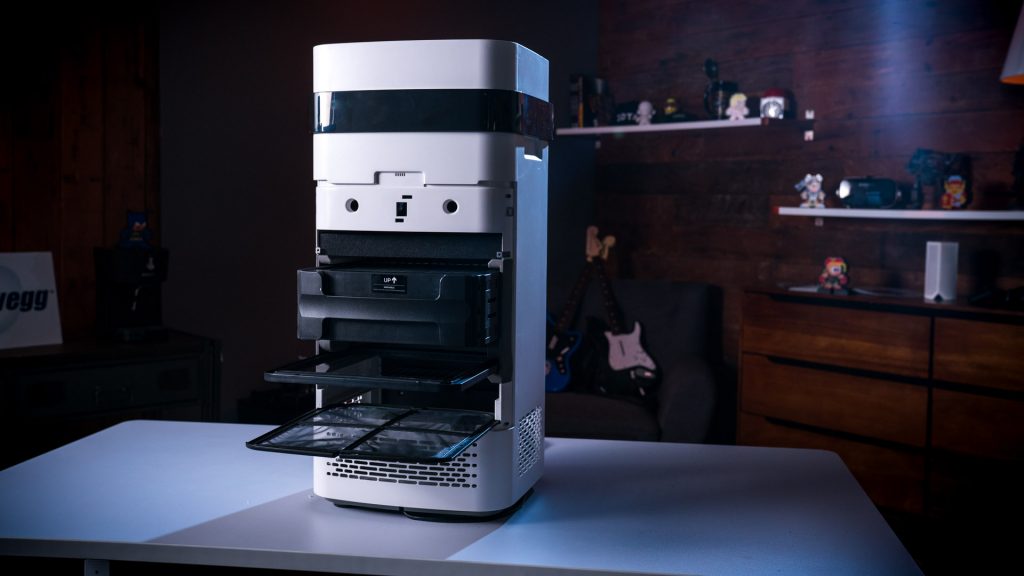
The design of the Airdog X5 air purifier is sleek and restrained, with a modern look that is pleasing. I found it subtle enough to blend into my bedroom and living room, which is just what it should do. Overall, the unit is 2’ tall x 1’ deep x 1’ wide, with an LCD screen hidden within the black band that circles the upper portion of the purifier to display settings and air quality measurements.
Looking at the X5, the air inlets are positioned at the lower portion of the unit on two sides, so they can draw air from different angles at the point where debris is most likely to be settling on the ground. The air travels up through the body of the purifier, and exits at the top with a high-volume fan that pumps out 185 CFM (Cubic Feet per Minute) of purified air. What that means in practice is that the Airdog can clean the air in a 300ft² room in 20 minutes, and has a CADR (Clean Air Delivery Rate) of 310m³/hr. In short, that’s a hefty amount of airflow for both purification and distribution in home or office use.
New Dog, New Tricks
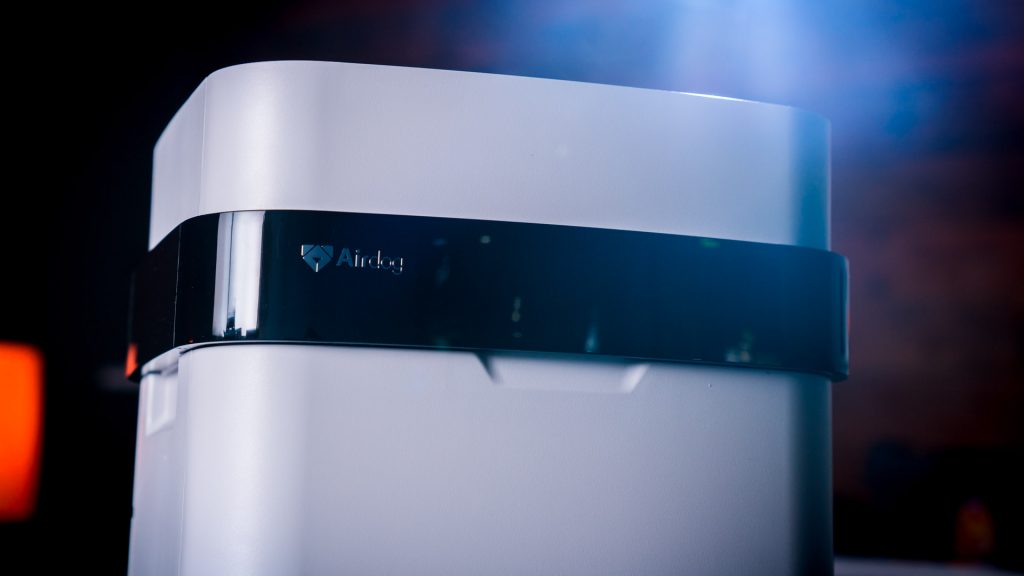
As with most new home tech devices nowadays, the Airdog is Wi-Fi compatible and can be controlled via app to adjust settings, track air quality, and remind users when to wash out the filters. Really, I think Airdog could have done well with adding a more basic model that doesn’t use Wi-Fi or an app, focusing on lower cost with high quality filtration to really kill the competition.
One of the key differentiators between the Airdog and other air purifiers is the multi-stage filtration, which is designed to eliminate waste by using washable filters instead of the traditional single-use disposable ones. These can be popped out and tossed in the dishwasher to be reused infinitely, which saves money on replacements and keeps the green factor up.
Airdog’s X5 has six different modes of operation, with an air quality monitor built in to keep track of its effectiveness and automatically adjust to the appropriate mode for the specific level of air pollution. There are four fan speed modes (slow-turbo), as well as a sleep mode that kills the display lights and operates at a slow speed. The “Auto” mode uses sensors to determine the proper speed according to the air quality, and adjust automatically.
The AQI (Air Quality Index) measurement is the EPA’s (Environmental Protection Agency) standardized metric for air quality, on a scale from 0-500. The higher the number, the more health risk there is. A color-coded LED indicator along with the display screen on the front of the unit relay this measurement, so users can visualize the air purification process as it takes place.
For many people there are a couple of questions that come to mind when considering an air purifier:
- What is the average filter replacement cost over time?
- What is the square footage coverage?
- What is the operating noise volume?
- Does it produce ozone?
The Airdog deftly tackled these, and as mentioned with a washable filter there is no replacement cost, so that definitely helps to ease the pain of the initial unit cost. For a good air purifier, one would have to expect at least a good four years of operation, and with regular filter replacements for other brands that use disposable filters that can definitely add up. With the X5, users can purify a maximum of 1,400ft² in one hour, with a 700ft² room being cleansed twice over in the same amount of time, with a maximum volume of 63dB in Turbo Mode and a minimum volume of 22dB in Night Mode.
Regarding ozone production; every ionic, electric air purifier does indeed produce small amounts of ozone. This is one of the elements in smog, and is unhealthy in significant doses. There are specific “ozone purifiers” that are especially egregious and should be avoided at all costs. The Airdog however, produces minimal trace amounts of ozone at 0.01ppm (parts per million) over a 24-hour period. Not only is this an insignificant amount as a standalone, but the X5 is EPA-compliant and California Air Resources Board (CARB) certified so you can rest easy knowing the unit is safe to use in confined areas for extended periods of time.
What Is a HEPA Air Purifier?
HEPA (High-Efficiency Particulate Air) purifiers are now quite common personal and office air solutions, as well as retrofit HEPA filters for HVAC systems as whole facility air purification— often seen in medical facilities, homes, and airplanes. The idea behind HEPA filters is to have multiple layers of tubular fibers arranged in various directions, which are designed to trap air contaminants like pollen, dust, pet dander, and other fine particles.
By trapping the solid contaminants, the air that passes through is cleaner, and less likely to cause respiratory irritation for those with afflictions (possibly preventing some afflictions from developing).
In order for filters or purifiers to be considered HEPA-quality, they need to trap 99.97% of particles that are 0.3 μm in size. Obviously that is quite small, and at this size dust and pollen are removed, as well as some other household allergens that would present respiratory issues. However, HEPA-grade purification doesn’t trap contaminants smaller than 0.3μ in size so there is still a shortcoming with this technology. That’s where Airdog steps in.
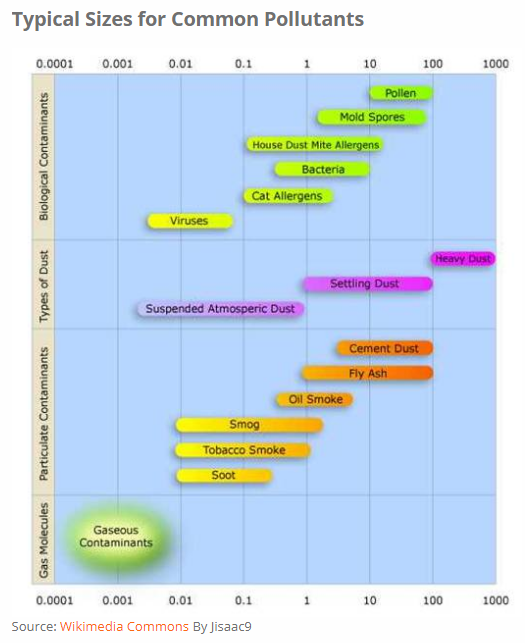
For reference, these are the sizes of common household air pollutants:
-
- Smoke 0.01-0.5 μm
- Vehicle exhaust 0.01-1μm
- Industrial emissions 0.01μm
- Viruses 0.017-0.3μm
- Cooking fumes/odors 0.063-0.4μm
- Dust 1μm
- Pollen 2μm
Air Purification Performance
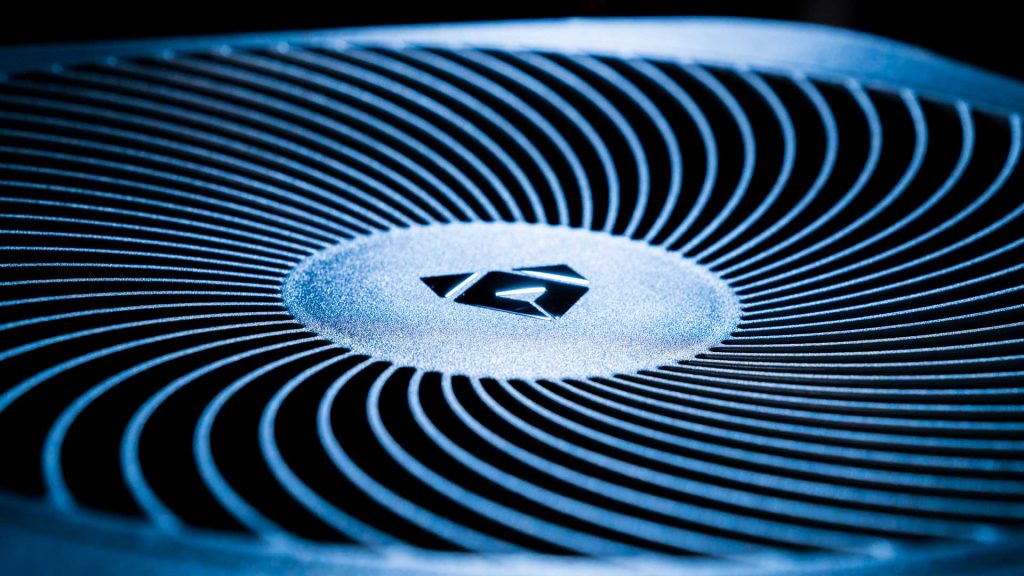
Arguably the most important factor when deciding how to choose an air purifier is the level of purification. As noted, HEPA filters only clean down to 0.3μm which removes larger particles like pollen, dust and dander, however fine-particle atmospheric dust, viruses, certain smoke, and gases can be much smaller and slip through.
Airdog filters the air down to 0.0146μm, which is fine enough to remove almost all but fine gas particles, making it more effective at air purification than HEPA filters. There isn’t a catchy acronym for their filtration standards, but it definitely goes beyond what most people think of as “top-of-the-line” purification.
The X5 does this via their multi-stage filtration method, which has five layers of materials that progressively trap smaller and smaller contaminants. A key element to the performance is the combination of this series of filters with an ionic field. What exactly is an air purifier ionizer? Basically, it is a component in the purifier that applies voltage to miniature rods which dissipate electrons into the air. Once the electrons come into contact with air molecules they form ions that attach to contaminate particles, either falling to the floor or improving the ability of the filter to capture them.
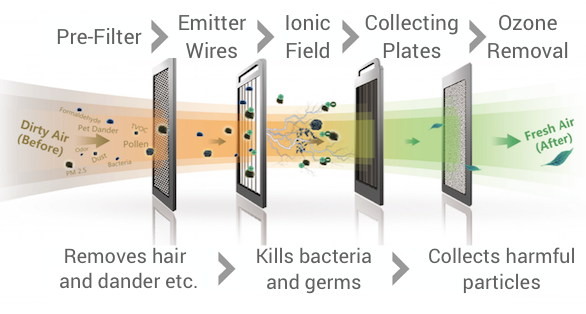
I have two large dogs, and the constant indoor-to-outdoor activity ensures there is plenty of dust floating around the air and settling on everything (along with the dog hair, pet dander, and general smell of dog). I first ran the X5 in a bedroom to test it out in a smaller air space, about 21’x14’ or just under the 300ft² area that should take 20 minutes to clean.
First firing up the Airdog I was pleased at how quiet it was, with a max noise output of 65 dB at full speed. At full speed it is definitely apparent, however I ran it well under full capacity and it was hardly noticeable (and didn’t prove disturbing while sleeping either).
Immediately, the purified air pumped from the top of the unit smelled remarkably better, to the point where I briefly suspected it was scented. I felt a sudden embarrassment that I was living in a pigsty and didn’t notice how unclean the air around me was. Sure enough, within 20 minutes the entire room smelled remarkably better, and the air felt lighter.
Next I set the Airdog up in the living room, which is much larger and let it run for the rest of the evening. I can safely say that the air purifier removed any traceable pollen, pet dander, odors, and dust from the area as my fiance’s allergies were virtually gone the next morning. While I don’t suffer from allergies myself, there was a stark difference in the air quality, similar to the experiment in the bedroom.
While I don’t have the scientific measurement tools to test the actual particulate filtration capabilities, most household allergens and viruses are around the .017-0.3μm size or larger. To give some reference, the Dyson Pure Cool AM11 can capture 99.97% of particles down to 0.3μm, while the Airdog X5 can capture 99.99% of particles down to 0.0146μm. So which is the best air purifier for pollen, dust, pet dander, smoke, odors, and allergies? I’m going with the one that removes all of the above.
Rare Air for All
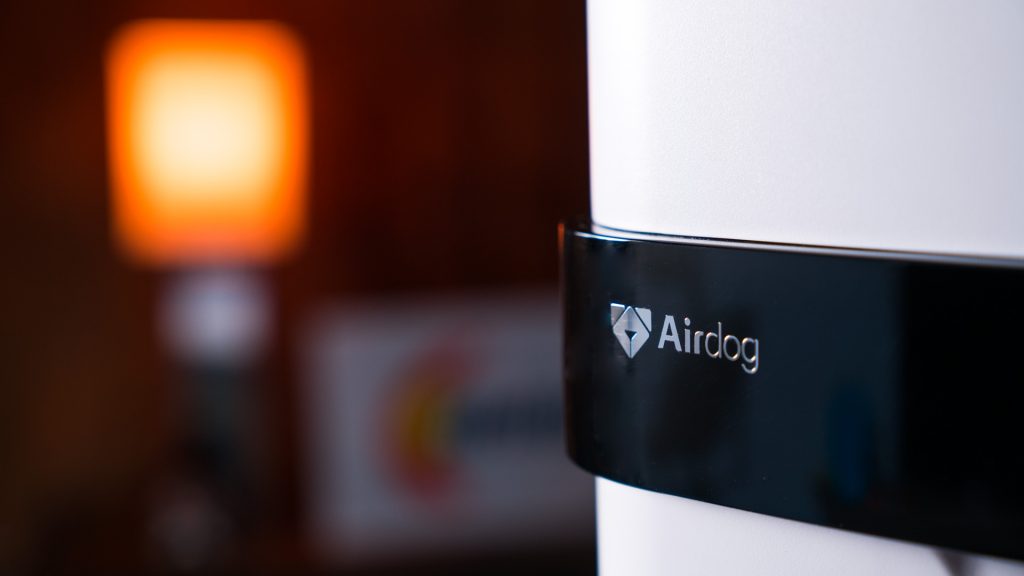
I have to agree with the Indiegogo backers on this one and say the performance of the Airdog X5 is well-above what I was expecting. Having limited experience with air purification units prior, I had doubts as to whether the difference would really be noticeable without measurement tools. After using the X5 in my home for several days on end, it is clear the quality of air is vastly improved in terms of smell, cleanliness, and overall feel when breathing.
From a health perspective, the purification beyond HEPA standards is very attractive and getting the best filtration possible puts this device in good standing with me. While the $599 price tag isn’t cheap, those concerned about the air quality or respiratory health under their roof can take solace in knowing the air is getting cleansed at a highly efficient rate. Additionally, the lack of disposable filters helps to save on the lifetime cost of the unit and ensure clean air for years to come.

